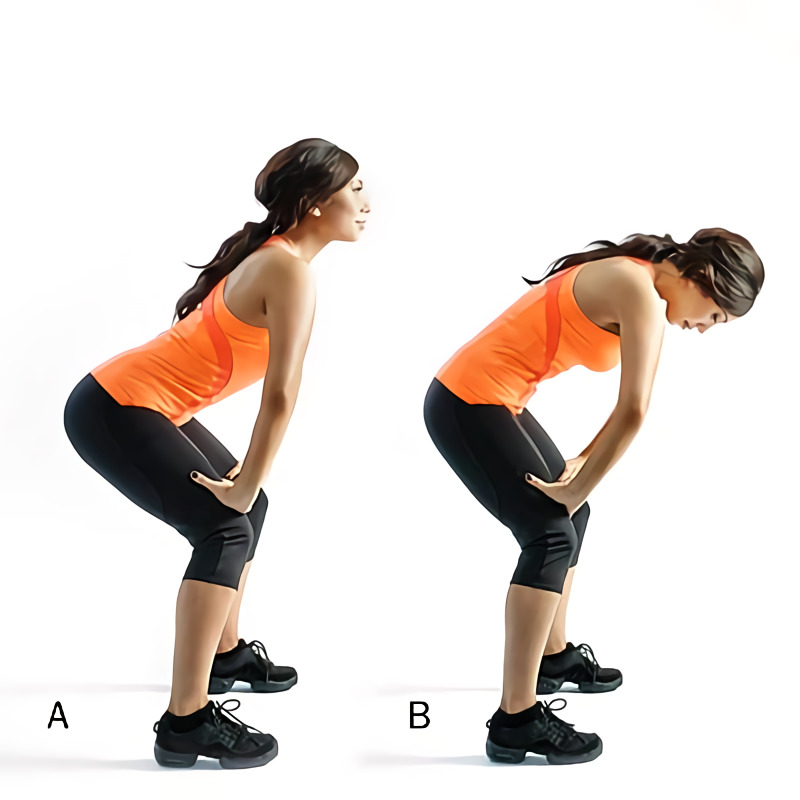
Table of Contents
- Tips for Avoiding Back Pain
- At-Home Treatments for Back Pain Due to Standing
- Exercising at Work to Help with Standing
- Seeking the Help of a Doctor
Numerous studies by medical researchers and occupational safety organizations have demonstrated that standing for long periods of time can lead to a variety of poor health outcomes, including lower back pain and leg pain due to muscle and tissue stress.
Anywhere from 50-80 % of adults experience low back pain in their lifetimes, and working adults have the highest risk. Since many jobs require standing for many hours, it is important to know how to stand for a long time to minimize the risk of developing lower back problems.
Tips for Avoiding Back Pain From Standing at Work

Prolonged standing puts pressure on the muscle groups stabilizing the lower spine and hips. According to the OSHA Back Injury Instructor Guide, low back pain that develops for any reason usually involves spasms of the large muscles alongside the spine. Symptoms include muscle pain or discomfort in the back, leg pain, swelling, and tiredness. Your back may hurt while standing, and you might experience pain when standing up or sitting down.
Standing for hours can lead to inflammation of the veins and cause joints in the spine, hips, knees and feet to become immobilized. The immobility can cause pain now but also lead to degenerative damage to the ligaments and tendons.
Following are some tips for standing for long periods of time that may help you find relief if you experience lower back pain when standing still.
- Take a break from standing by sitting down at intervals throughout the day
- Use an adjustable height work table so your work is kept at waist level
- Use anti-fatigue floor mats but not thick rubber mats that are too soft
- Wear supportive shoes or shoe inserts that keep feet in a neutral position
- Change work positions by periodically placing a foot on a footrest while standing
- Use good body posture
Posture plays a big role in knowing how to stand for long periods of time. After standing for hours, there is a tendency to slouch out of fatigue, meaning the back, neck, and shoulders are curved. The best standing position is one in which your head is up, the stomach is pulled in, the shoulders are back and the spine is straight. You should use the footrest to rest one foot and then the other periodically to change your posture. It is also a good habit to get into because it can remind you to watch your posture.
If work permits and you experience lower back pain from standing too long, ask your employer for a sit-stand workstation.
A study by the American College of Occupational and Environmental Medicine found that chronic lower back pain was reduced in severity by using a sit-stand workstation. The same finding was reported by medical researchers in an article published in Ergonomics. In this study, standing-intolerant participants benefited from 12 weeks of using a sit-stand desk without taking any other steps to improve lower back pain.
At-Home Treatments for Back Pain Due to Standing
There are steps you can take at home to minimize the risk of low back pain from standing while at work.
- Lose and maintain a healthy weight if overweight
- Do gentle exercises that strengthen back muscles, like walking and swimming or stretches like the knee-to-chest stretch and pelvic tilts
- Strengthen core muscles that provide critical support for the back
- Take non-steroidal anti-inflammatory drugs (NSAIDs) to reduce inflammation and pain, so you can do the exercises
- Take time to relax
- Sleep on a mattress that provides proper support
- Apply alternating heat and ice to the painful area
Exercising at Work to Help with Standing
If you stand all day, doing stretching exercises throughout the day can interrupt the routine posture you hold. Doing a simple back stretch every hour is easy to do and can be especially helpful for people who are unable to sit at work. For example, the physiologist suggests doing the Standing Cat Camel:
- Stand with your feet under your shoulders
- Slightly bend the knees
- Put your hands on your legs just above the knees
- Round the back and curve the shoulders
- Arch the back and open the chest while rolling the shoulders back
- Alternate the rounding and arching of the back for 2 minutes every hour

Some other exercises you can do while at work include squats, shifting from one foot to another, rolling from tiptoes to heels and back, stretching towards the ceiling with arms reaching up and then stretch downward while keeping the legs straight, and side bends, to name a few.
Seeking the Help of a Doctor
Some people experience lower back pain after standing for a few minutes. This may indicate a spinal medical condition may have developed. Fortunately, lower back pain due to excessive standing is usually treatable by following some basic guidelines. However, if the self-care options do not help and the pain persists for more than a few weeks or spreads further down the legs, it is important to see a doctor. Standing for long periods of time may be aggravating an undiagnosed medical issue, like a bulging disk or osteoporosis.
Sources
- https://www.ncbi.nlm.nih.gov/pmc/articles/PMC4591921/
- https://link.springer.com/article/10.1007/s00296-019-04273-0
- https://www.osha.gov/sites/default/files/2019-03/back_injury_instructor_guide.pdf
- https://www.ccohs.ca/oshanswers/ergonomics/standing/standing_basic.html
- https://pubmed.ncbi.nlm.nih.gov/26735316/
- https://www.tandfonline.com/doi/abs/10.1080/00140139.2020.1761034?journalCode=terg20
